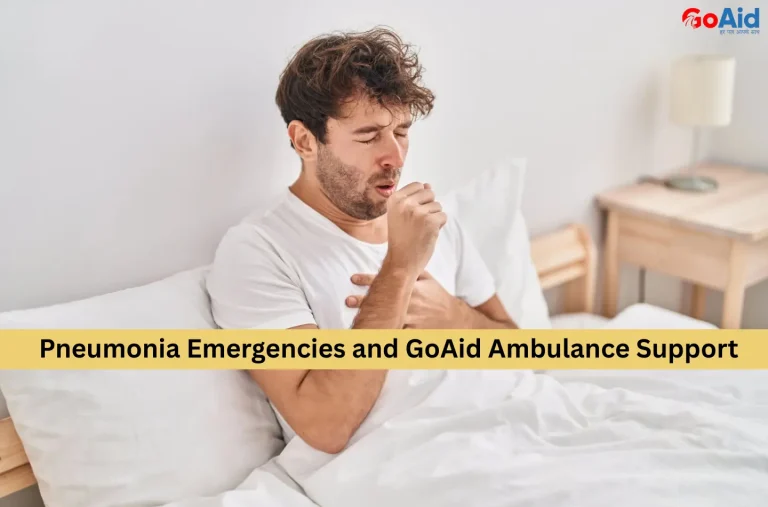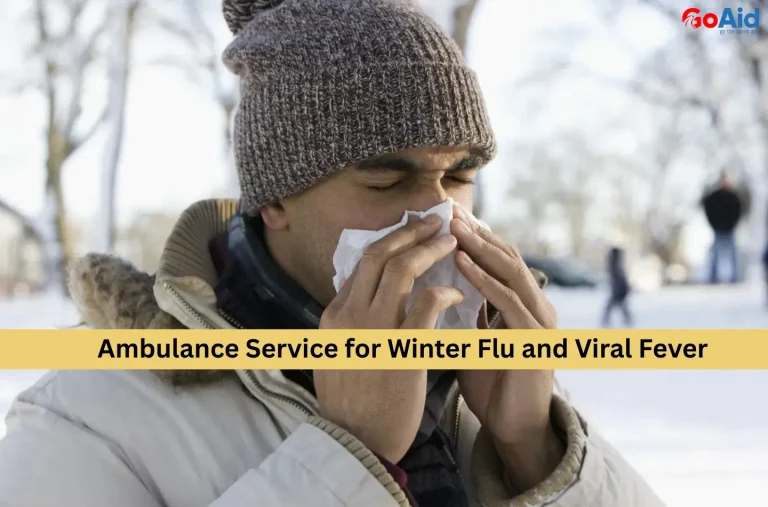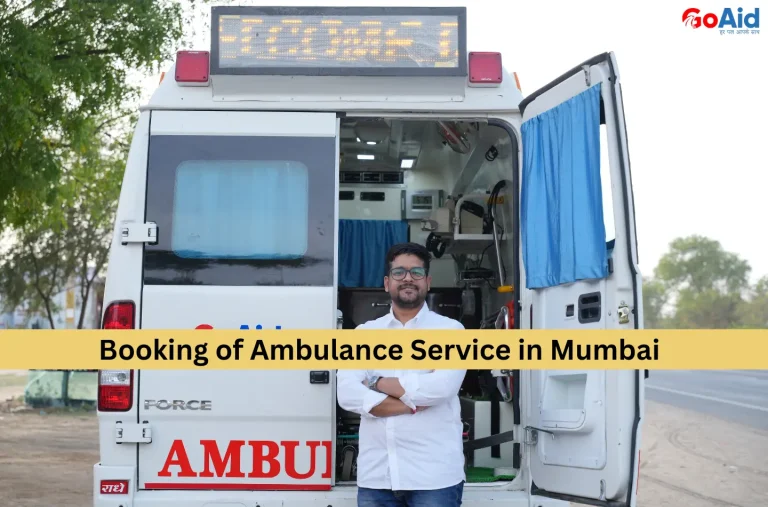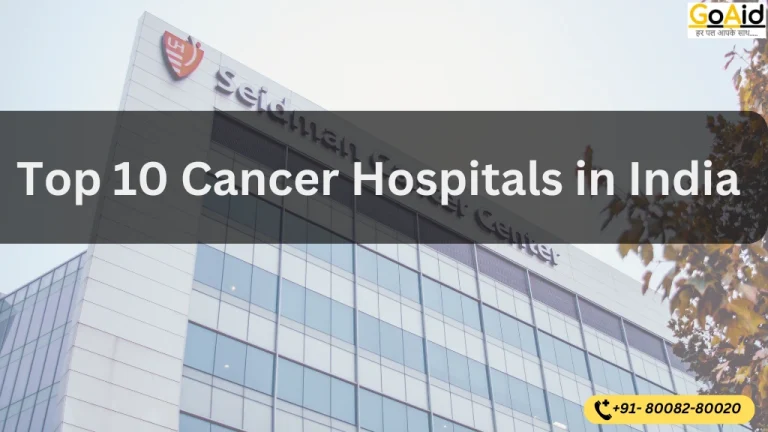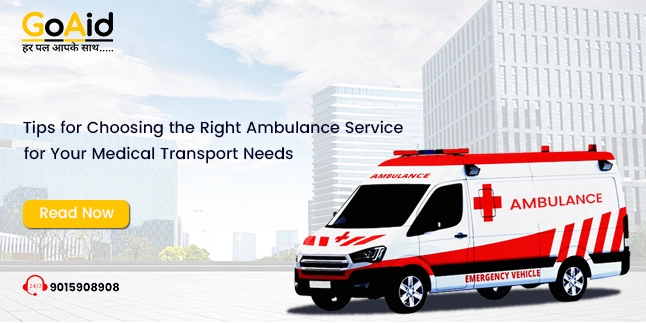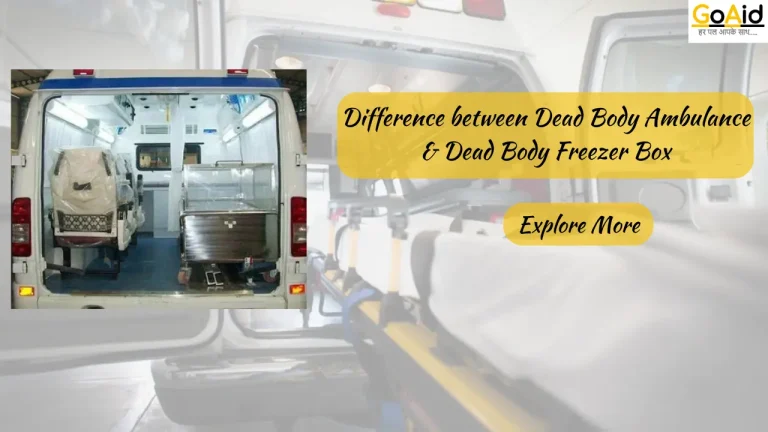School events often bring together large groups of students, teachers, and visitors. This increases the chances of unexpected injuries or medical emergencies. From sports activities to annual functions, even a minor accident can escalate without timely care. This makes on-site emergency preparedness extremely important for every school.
This is why, in this blog we have provided you with all the details about why student safety must be prioritised, common school-event injuries, the importance of immediate medical response, the role of standby ambulances, how GoAid supports schools during events, and the essential equipment campuses should keep ready. Do you want to know all these information in detail? then read our blog to the end.
So, lets start
Why Should Student Safety Must Be a Priority at School Events?
Student safety must be the top priority at school events because children are more vulnerable to sudden injuries, medical emergencies, and unexpected accidents during large gatherings.
Events such as sports days, annual functions, fairs, cultural programs, and outdoor trips involve high physical activity, crowded spaces, and greater excitement┬Ā , all of which increase the chances of falls, sprains, dehydration, breathing issues, and minor to severe injuries.┬Ā
Immediate medical response becomes crucial because even small delays can worsen a childŌĆÖs condition or cause unnecessary panic among students, teachers, and parents.
With hundreds of students gathered in one place, schools must be prepared for unpredictable health emergencies such as asthma attacks, allergic reactions, fractures, fainting, or heat-related issues.
Having trained medical staff and a standby ambulance ensures quick diagnosis, immediate first aid, and safe transportation to a nearby hospital if needed. Prioritizing safety not only protects students but also builds trust among parents and strengthens the schoolŌĆÖs responsibility toward proper child safety protocols.
A well-prepared event with instant medical support reflects the institutionŌĆÖs commitment to creating a secure and reliable environment for every child.
Common Injuries During Sports & Annual Functions at Schools
School sports days and annual functions involve high physical activity, crowded spaces, and energetic participation. This increases the chances of injuries. Quick awareness helps schools stay prepared and protect students effectively.
- Sprains and Strains
These occur when students twist their ankles or joints during running or sports. Immediate rest, compression, and medical assessment help prevent long-term damage.
- Minor Cuts and Bruises
Falls on hard surfaces or collisions cause superficial injuries. Quick cleaning, dressing, and monitoring reduce infection risks and keep the student comfortable.
- Fractures and Dislocations
Sports like football, basketball, or gymnastics may lead to bone injuries. Stabilizing the affected limb and seeking ambulance support is essential.
- Head Injuries
Falls or accidental hits can cause mild to severe head trauma. Quick assessment prevents complications like dizziness, internal injury, or fainting.
- Dehydration and Heat Exhaustion
Outdoor activities may cause fluid loss and fatigue. Fast rehydration and first aid prevent further weakness or collapse.
- Muscle Cramps
Overexertion leads to painful cramps. Stretching, hydration, and timely rest help students recover quickly.
- Nosebleeds
Physical activity or dry winter air may trigger nosebleeds. Gentle pressure and correct positioning help stop bleeding safely.
- Asthma Attacks
Running or dust exposure can trigger breathing issues. Quick access to inhalers and medical support ensures student safety.
- Allergic Reactions
Food, dust, or insect bites may cause allergies. Timely administration of antihistamines and close observation are crucial to prevent escalation.
- Fainting Episodes
Stress, fatigue, or dehydration may cause students to faint. Immediate medical attention helps restore stability and rule out deeper issues.
Also Read: 24├Ś7 Home Nursing & Ambulance Support System
Importance of Immediate Medical Response on Campus
Schools must ensure instant medical care during events because even minor delays can turn small injuries into serious emergencies. On-site readiness strengthens safety and boosts parental trust.
- Prevents Minor Injuries From Escalating
Quick medical attention stops small wounds or sprains from becoming infections or long-term mobility issues.
- Reduces Panic Among Students and Teachers
Fast intervention helps control fear and confusion, restoring order and providing emotional reassurance.
- Enables Proper Handling of Critical Cases
Severe injuries like fractures or head trauma require immediate stabilization to prevent permanent damage.
- Supports Children with Chronic Conditions
Students with asthma, epilepsy, or allergies need fast response during sudden flare-ups.
- Improves Safety During Large Crowds
Events with thousands of attendees need on-the-spot medical help to manage unexpected incidents efficiently.
- Helps in Quick Decision-Making for Transfers
If the condition is serious, a standby ambulance ensures rapid transfer to the nearest hospital without delay.
- Builds Stronger Safety Reputation for the School
Parents trust institutions that prioritize health by ensuring trained paramedics and immediate medical care on campus.
Role of Standby Ambulances in High-Risk Activities
High-risk school activities ,sports, marathons, adventure events, crowd gatherings, and stage performances require instant medical readiness. A standby ambulance ensures that any emergency is handled without delay, safeguarding students and staff throughout the event.
- Immediate On-Site Medical Support
A standby ambulance provides instant access to life-saving care. This ensures injuries or medical emergencies are treated within minutes.
- Faster Stabilization of Critical Injuries
Paramedics quickly stabilize fractures, head injuries, or severe bleeding, preventing the condition from worsening before hospital transfer.
- Ensures Safe Transfer to Hospitals
In serious situations, the ambulance can transport the student to the nearest medical facility without waiting for external help.
- Supports Children with Pre-Existing Conditions
Students with asthma, epilepsy, or heart issues receive monitored support in case symptoms flare during activities.
- Reduces Risk During Physically Demanding Sports
High-intensity games often lead to dehydration, sprains, or impacts. A standby ambulance ensures safe, rapid intervention.
- Handles Crowd-Related Incidents
Large gatherings can cause choking, panic attacks, or accidental injuries. Paramedics manage these emergencies efficiently.
- Provides Oxygen & Advanced Medical Equipment
Ambulances carry oxygen cylinders, stretchers, and first aid tools needed for immediate care.
- Prevents Delays in Life-Threatening Situations
A quick response is critical in cardiac events, breathing issues, or concussions, which require urgent attention.
- Offers Professional Assessment on the Spot
Trained paramedics evaluate injury severity and decide whether hospital admission is necessary.
- Boosts Overall Event Safety Standards
Having a standby ambulance increases safety confidence among parents, teachers, and students. This ensures better event management.
How GoAid Supports School Events Across Cities?
GoAid provides reliable and well-equipped standby ambulance services for school events across multiple Indian cities. This ensures student safety remains the highest priority. Their team deploys advanced ambulances,BLS, ALS, ICU, and pediatric units ,depending on the schoolŌĆÖs needs.┬Ā
Trained paramedics stay on-site throughout the event to handle injuries, breathing issues, dehydration, allergic reactions, falls, or any sudden emergencies. GoAid also ensures rapid hospital transfers when needed, using GPS-enabled navigation for faster routes even in high-traffic areas.
Schools receive complete event medical coverage. This includes first-aid support, medical equipment, and emergency readiness plans.
With a strong presence in Delhi, Gurugram, Jaipur, Patna, Noida, and more cities, GoAid ensures uninterrupted protection for students during sports days, annual functions, marathons, cultural events, and high-crowd activities. Their dependable medical response helps schools maintain top-level safety standards.
Benefits of Hiring GoAid Ambulance Service for School Events
School events demand fast, reliable, and professional medical readiness. GoAid ensures complete on-site safety with trained paramedics, advanced ambulances, and rapid response support. This makes every school event more secure and better managed.
1. Instant On-Site Emergency Care
GoAid paramedics provide immediate medical attention for injuries, breathing issues, or sudden illnesses. This ensures students receive timely care during school events.
2. Advanced Life-Saving Equipment Available
Each ambulance is equipped with oxygen, monitors, and first-aid tools to manage both minor and critical emergencies efficiently.
3. Fast Transfer to Nearby Hospitals
If a student needs advanced treatment, GoAid ensures quick, safe, and well-coordinated transfer without delays.
4. Trained Paramedics Specialized in Pediatric Care
GoAid teams understand child physiology and respond effectively to student-specific injuries, allergies, or breathing difficulties.
5. Multiple Ambulance Types for Different Needs
Schools can request BLS, ALS, ICU, or pediatric ambulances depending on event size and risk level.
6. Reliable Support for Crowded or High-Risk Events
Sports days, marathons, and annual gatherings are safer with an on-site ambulance ready for immediate response.
7. Continuous Event Monitoring
Paramedics observe students throughout the event, identifying early signs of distress or dehydration before emergencies develop.
8. Compliance With School Safety Standards
Hiring GoAid helps schools meet safety norms. This increases trust among parents and staff.
9. Fast Communication & Real-Time GPS Tracking
Schools receive live updates, quick coordination, and ensured response through GoAidŌĆÖs advanced tracking systems.
10. Across-City Availability
GoAid operates in multiple major cities. This makes it easy for schools to access dependable event medical coverage anywhere.
General Medical Equipment Needed at School Event Sites
School events often involve physical activities, outdoor exposure, and large gatherings. This increases the chances of sudden injuries or medical issues. Keeping essential medical equipment ready ensures quick response, better safety, and immediate care until ambulance professionals arrive.
1. First-Aid Kit
A fully stocked first-aid kit with antiseptics, gauze, bandages, medical tape, and wound cleaners helps schools treat minor cuts, bruises, and scrapes quickly, preventing infections and stabilizing students before advanced medical help reaches.
2. Ice Packs & Cold Compresses
Ice packs are essential for treating sports injuries such as sprains, swelling, muscle pulls, and bruises. They offer immediate pain relief, reduce inflammation, and help control early swelling before paramedics assess the injury.
3. CPR Mask or Face Shield
A CPR mask provides a protective barrier between the rescuer and the student during chest compressions or rescue breaths. This allows safe, hygienic, and effective CPR administration in breathing or cardiac emergencies.
4. Oxygen Cylinder with Mask
An oxygen cylinder is vital for sudden breathing problems, asthma attacks, trauma-related shock, or fainting cases. Providing immediate oxygen stabilizes the studentŌĆÖs condition until a standby or arriving ambulance takes over.
5. Automated External Defibrillator (AED)
An AED helps revive students experiencing sudden cardiac arrest by delivering controlled electric shocks. Having it on-site allows teachers or paramedics to provide life-saving intervention within crucial minutes.
6. Stretcher or Wheelchair
A stretcher or wheelchair ensures injured, fainted, or immobile students can be moved safely without worsening fractures, sprains, or dizziness. It also helps transport them smoothly to the medical area or ambulance.
7. Blood Pressure & Glucose Monitor
These devices help assess students who faint, feel dizzy, or have underlying medical conditions. Early monitoring of vitals helps identify critical issues like low sugar, high blood pressure, or dehydration.
8. Nebulizer & Rescue Inhalers
Essential for students with asthma or respiratory sensitivity, these devices provide immediate relief during breathing difficulties triggered by dust, exertion, or allergies, preventing the situation from escalating before ambulance care.
9. Emergency Medications
Basic medicines like antihistamines, pain relievers, antiseptic ointments, and rehydration salts handle common issues like allergies, headaches, shock, or minor infections. This offers fast interim relief until professional treatment begins.
10. ORS & Hydration Supplies
ORS packets, glucose drinks, and water are important for preventing dehydration, heat exhaustion, and dizziness during sports or outdoor functions. They help students regain energy and maintain healthy hydration levels.
Essential Role of On-Site Paramedics in the School
On-site paramedics play a vital role in ensuring student safety, especially during sports events, annual functions, daily assemblies, and regular school hours. Their presence helps schools handle medical emergencies quickly, preventing delay-related complications.
Paramedics are trained to identify early symptoms of distress, provide timely first aid, stabilize injured students, and manage critical conditions until an ambulance arrives. They also monitor high-risk activities, support school staff in medical preparedness, and guide teachers on handling minor injuries safely.
Additionally, on-site paramedics help reduce panic during emergencies by offering structured and professional support. They maintain essential medical equipment, track emergency readiness, and ensure that every school event meets safety standards.
With rising health risks and active school environments, having paramedics available on campus significantly boosts confidence among parents, staff, and students while creating a more secure learning atmosphere.
Conclusion
In conclusion, we have provided all the information about the essential role of on-site paramedics in schools, highlighting how they improve safety, emergency response, and overall student well-being. Their presence ensures immediate medical care, better preparedness during school events, and reduced risks during injuries or health issues.
With the right paramedic support, schools can maintain a safer learning environment and respond effectively to unexpected medical situations. This ensures peace of mind for parents, teachers, and administrators.
FAQs
Q1: Why are on-site paramedics important in schools?
A: On-site paramedics ensure immediate emergency treatment, faster response during injuries, and better safety during sports and events. They stabilize students quickly and prevent complications by offering professional medical care on the spot.
Q2: How do paramedics help during school sports events?
A: Paramedics monitor high-risk activities, provide instant first aid, treat common sports injuries, and manage emergencies like fractures or dehydration. Their timely support ensures safer participation for students during athletic events.
Q3: What equipment do paramedics use on school campuses?
A: Paramedics use first-aid kits, oxygen cylinders, splints, BP monitors, stretchers, and emergency medications. This equipment helps them respond to injuries, breathing issues, allergic reactions, or sudden medical conditions effectively.
Q4: How does GoAid support schools with medical services?
A: GoAid provides trained paramedics, fully equipped ambulances, rapid response teams, and 24/7 medical assistance. Their reliable service ensures schools get instant support during events, emergencies, and day-to-day health situations.
Q5: Can on-site paramedics reduce emergency risks in schools?
A: Yes, paramedics significantly reduce risks by offering preventive monitoring, quick diagnosis, and timely treatment. Their expertise ensures students receive early care, preventing minor issues from turning into critical medical emergencies.









